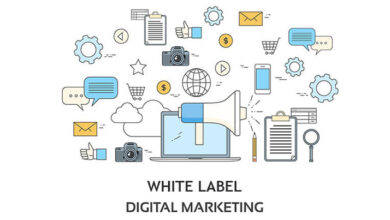Unleash the true power of headless commerce for digital transformation
Digitalization has become a key driver of the commerce industry in recent times. Every day, more and more businesses are shifting their physical operations to digital stores, integrating online channels, and gaining access to the global audience mass. While on one hand, digitalization has paved the way for revolutionizing the commerce industry, on the other hand, it has opened a sea of challenges that businesses are trying hard to resolve. For instance, embarking on digital transformation based on conventional or traditional technologies has proven to be way more challenging than what was comprehended.
Either businesses are failing to provide an upscale customer experience or struggling with integrating digital technologies with their online commerce platform. This is where the concept of headless e-commerce comes into play. Known to be capable of bringing significant changes in the commerce industry, this concept is now being adopted worldwide. So, in this below article, we have explained what headless commerce is, its architectural representation, technical and business benefits, and many more.
What is headless commerce and its architecture?
Every traditional website or web app is based on a monolith architecture where the frontend and backend layers are deeply integrated with one another. Due to this, they lack flexibility and modularity to an extent where a minor change in either of the two layers will impact multiple processes in the other layer. For instance, changing the business logic handling the online order management process can easily impact the performance of the shopping cart or the UI components handling the order page.
To overcome these challenges, headless architecture is now preferred in the commerce industry. Here, the entire frontend layer is decoupled from the backend so that changes in either layer won’t have a major impact on the other one. For example, if a change is deployed with the shopping cart UI component, the process service and delegate files handling the cart’s functionality won’t be impacted.
What are the core components of headless architecture?
Since headless architecture is a pretty nascent concept for many, it is crucial to understand its core components and their functioning. Below we have briefly described the three core layers involved in headless commerce.
Presentation layer: Frontend
The frontend layer comprises the interface, UI components, and other elements responsible for displaying different content types on the screen, including images, texts, banners, sliders, buttons, dropdowns, and many more. It is primarily written in top-notch frameworks like Vue, React, and Angular that offer a higher level of customization to meet business specifics and consumer trends.
API layer: Interaction or communication
Since the frontend and backend layers are completely decoupled from one another, the communication between them is exclusively handled through different service-based APIs. RestFUL and GraphQL are the two major API languages used to establish seamless interaction between the two layers and uncompromised data exchange. From fetching real-time data to rendering images on the frontend UI, the APIs are responsible for facilitating communication and making the overall commerce platform highly responsive.
Business logic and Data layer: Backend
The backend layer is responsible for handling numerous core commerce functionalities, like managing business logic, storing datasets, updating customer and product information, managing orders and shopping carts, and many more. It is highly robust to handle modern-scale business functions and can be integrated with several third-party applications. The backend layer in headless commerce is composed of numerous databases, order management systems, CMS applications, and servers.
How is headless commerce beneficial for e-commerce businesses?
- Headless commerce paves the way for digital transformation, allowing businesses to create omnichannel user experiences across all touchpoints, including mobile, web, POS, and many more. With this, the friction between brand experience and buying journey from different channels is reduced significantly.
- Since the decoupled architecture allows developers to make code changes or deploy custom features without any major negative impact, the time to market is significantly reduced. So, businesses can easily release the commerce software for real-time users while continuing with code changes or bug fixes in the background.
- All the components in headless architecture can be scaled on the go, without having to take down the software from the server and impacting business continuity.
- The headless architecture pays special attention to overall security, ensuring customer data is not exposed to any external resource. Furthermore, with APIs handling the communication and data exchange between the frontend and backend, the business logics are completely encapsulated.
- Lastly, the headless architecture is highly adaptable, meaning it can be integrated with several other emerging digital technologies like augmented and virtual reality, artificial intelligence, and so on.
What are the technical benefits of implementing headless commerce?
- Developers have the independence to choose the frameworks, hosting servers, databases, and other such technologies with headless architecture.
- From implementing new functions to customizing the OOTBs, developers can deploy changes quite fast without impacting the overall performance.
- Also, with decoupled frontend and backend layers, the development cycles of both layers can be managed simultaneously.
Conclusion
There is no doubt that headless architecture paves the way for digital commerce to overcome the challenges of the monolith and enhance the customer experience across all channels. On top of this, when combined with microservice-based design, businesses can achieve an exceptional level of modularity and flexibility to scale the modules and customize the functions on the go.



